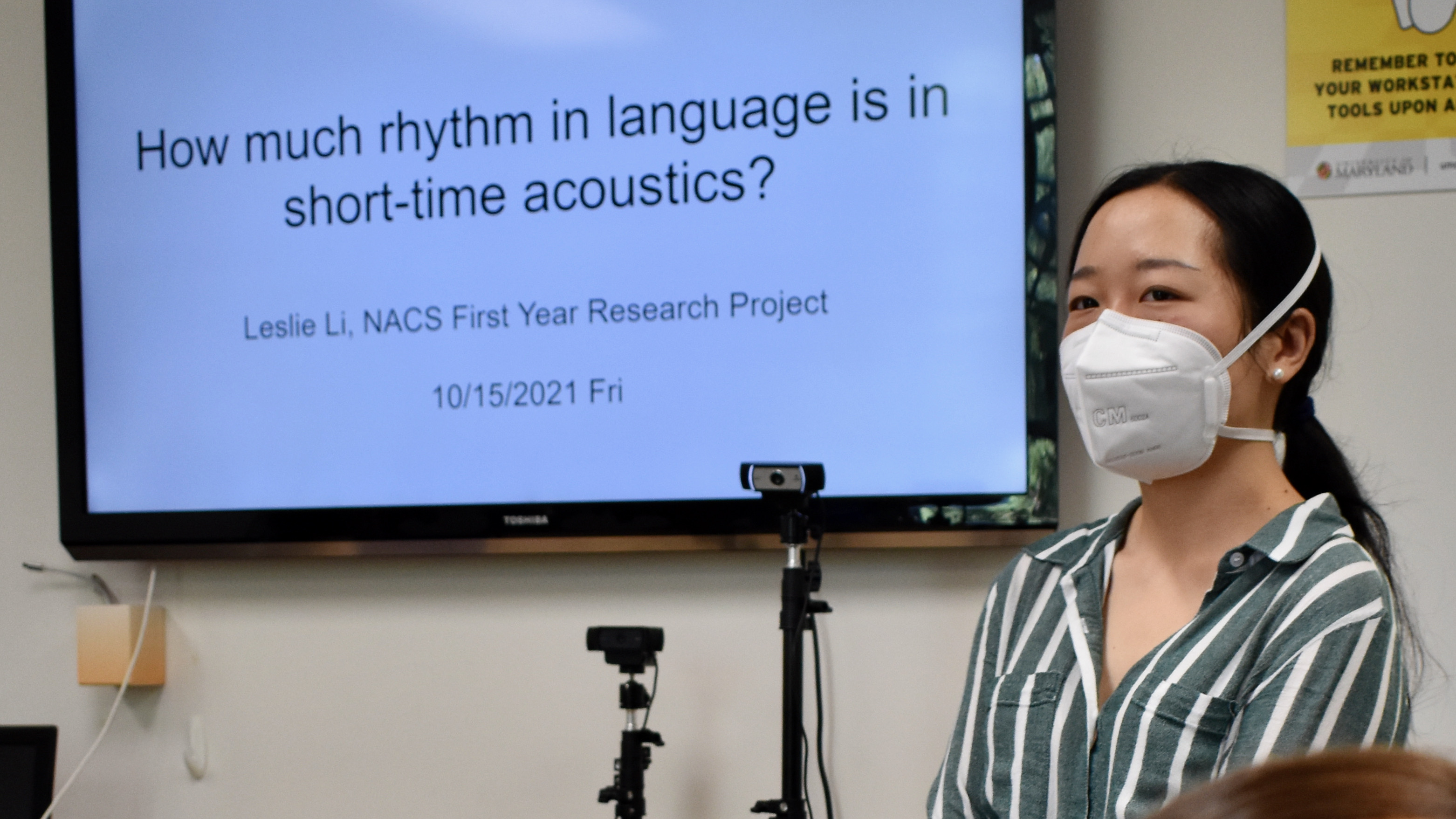Phonology Circle - Leslie Li / Representing speech rhythm

Phonology Circle - Leslie Li / Representing speech rhythm
Wednesday November 2, Leslie Li leads the Phonology Circle, with discussion of initial and recent results on temporal modulation in different languages, with some discussion on how this may be related to crosslinguistic differences in speech rhythm.
Abstract
Speech rhythm is salient to newborns and adults alike, but as a suprasegmental feature, defining and capturing speech rhythm is difficult. Recent work has found universals in the slow amplitude modulation in speech across different languages (Ding et al., 2017), with a peak around 4--5 Hz that is said to be about the syllable rate. Meanwhile, Varnet et al. (2017) have found cross-linguistic differences in speech rhythm depending on the location and height of the said peak. In the first part of my presentation tomorrow, I will discuss some conceptual replication of these results, along with some tweaks and sanity checks to see what is happening behind the amplitude modulation spectrum. In the second part of the presentation, I will combine this method with Harmonic-Percussive source separation, a technique borrowed from music information retrieval and was used in a recent model to simulate newborns' perception of rhythm (Li et al., 2022).

